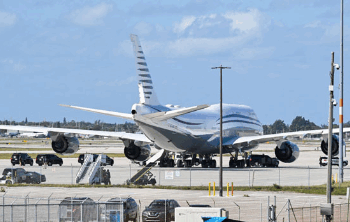Following the death of Pope Francis, centuries-old rituals will once again take center stage at the Vatican as cardinals gather to elect his successor.
The conclave, the secretive, highly structured process steeped in tradition, is set to commence on Wednesday.
The term “conclave” comes from the Latin cum clave, meaning “with a key,” referring to the seclusion of the cardinals behind locked doors until a new pope is chosen. As in past elections, the process will unfold within the Michelangelo-adorned Sistine Chapel.
To maintain the sanctity and impartiality of the vote, cardinals are cut off from the outside world. No newspapers, phones, mail, television, or internet access are allowed. Each cardinal takes an oath of secrecy before voting begins.
Unlike the cramped Apostolic Palace quarters used in the past, the cardinals will reside in the more modern Saint Martha House, inside Vatican City, throughout the conclave.
Though technically any baptized male Catholic could become pope, in practice the choice will come from the College of Cardinals. There is no official candidate list. Each cardinal writes his preferred name on a ballot, beginning with the words “Eligo in summum pontificem…” (“I elect as supreme pontiff…”), and they are encouraged to mask their handwriting.
Voting begins with a single ballot on the first day and continues with up to four ballots daily. A two-thirds majority is required for election. If no candidate achieves that threshold after three days, the process pauses briefly for prayer and informal discussions, as laid out in Pope John Paul II’s 1996 directive Universi Dominici Gregis.
Three urns are used in voting: one to collect ballots, another to store them post-count, and a third for ballots from ill or frail cardinals at Saint Martha House.
After each vote, the ballots are burned. Black smoke signals an inconclusive vote; white smoke—accompanied by the pealing of bells—announces the successful election of a new pontiff.
Upon accepting the position, the newly elected pope chooses a name—often honoring a previous pope or saint—and immediately assumes office. The cardinal protodeacon, currently French Cardinal Dominique Mamberti, will then step onto the balcony of St. Peter’s Basilica and declare to the world: “Habemus papam” — “We have a pope.”
What you should know
Though modernized in parts, the papal conclave remains one of the most tradition-bound ceremonies in the Catholic Church.
The election’s outcome will shape the Church’s direction on issues like interfaith dialogue, social justice, and moral teachings, impacting not only Catholics but global geopolitics. As the cardinals gather under Michelangelo’s Last Judgment, their decision will resonate far beyond the Vatican’s walls, defining the spiritual and moral leadership of a faith facing modern challenges.
ALSO READ TOP STORIES FROM VERILY NEWS

















